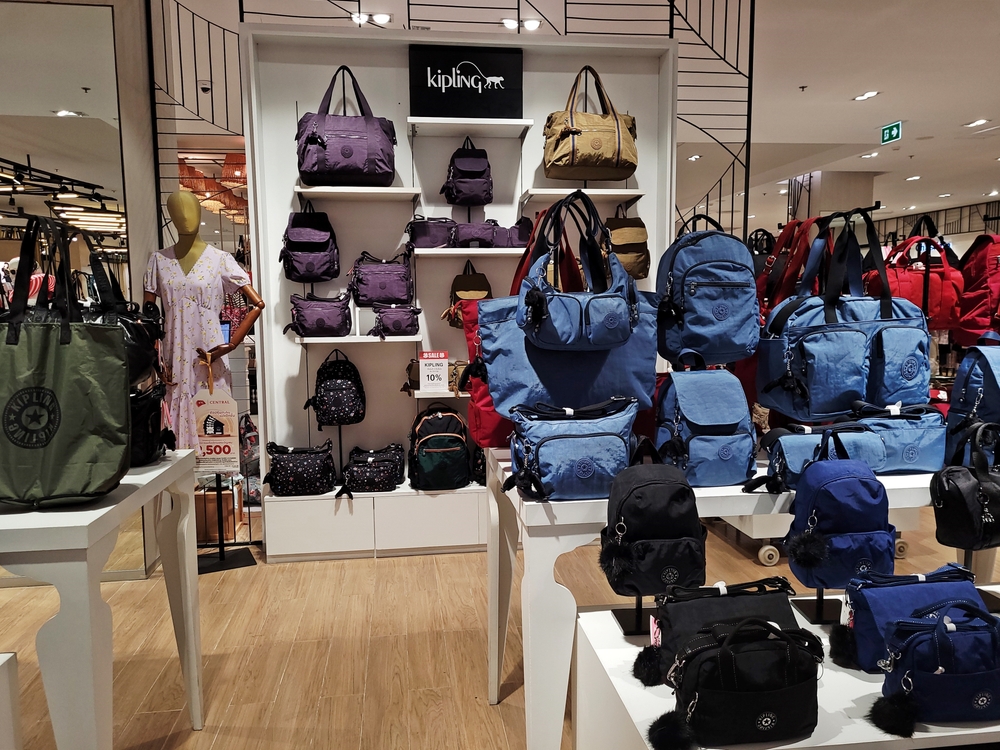Qualifying California shoppers who purchased items from Kipling outlet stores between December 8, 2019 and May 29, 2025 can now join a new class action settlement that resolves claims that the company engaged in misleading advertising by displaying fake discount prices.
With the September 25, 2025 claim deadline approaching fast, understanding the lawsuit, eligibility, and the claim process becomes increasingly important for potential class members.
What Is the Kipling Outlet Store Lawsuit About?
This class action lawsuit centers on allegations that the Kipling Apparel Corp systematically deceived customers by displaying inflated "reference prices," suggesting items cost more than they did.
Also known as “retail pricing fraud,” this practice made shoppers believe they were getting significant bargains when the discounts were largely fictional.
False advertising and misrepresentation claims
Lead plaintiff Christina Calcagno filed the lawsuit after purchasing a bag with an "original price" of $150 crossed out, with a "sale price" of $75, creating the illusion of a 50% discount when the store never sold the item at the higher price.
Calcagno says California's strict consumer protection laws strictly prohibit businesses from advertising false or misleading pricing information, and that she felt deceived after discovering the supposed "discounts" weren't genuine reductions from actual selling prices.
Who Can Participate in the Kipling Class Action Settlement?
Specific criteria determine eligibility for the Kipling outlet discount settlement. The agreement covers several consumers, but class members must meet specific requirements to qualify for compensation.
Class member eligibility
- Made a purchase at Kipling's California outlet stores between December 8, 2019, and May 29, 2025.
- Purchase included products advertised at discounts from an advertised reference price.
- Did not receive a refund or credit for your qualifying purchases.
- You are a U.S. resident.
The settlement also excludes Kipling employees, officers, directors, the company's legal counsel, and the presiding judge.
Direct benefit class member
Some shoppers do not need to submit a claim form to receive compensation.
If you received an email notice of the settlement directly from Kipling or the settlement administrator, the courts have already classified you as a "Direct Benefit Settlement Class Member."
This group, estimated at approximately 57,000 consumers, will automatically receive their vouchers from the Kipling settlement without taking any action.
Other class members
Members who did not receive direct email notification must submit a valid claim form by the deadline. Check the settlement website to see if you qualify and the steps to take to submit a claim form.
The settlement administrator uses Kipling's customer database to identify Direct Benefit members, so if you provided your email address during purchases at California outlet stores, check your inbox for settlement notifications.
How to Submit a Kipling Settlement Claim
The settlement administrator has implemented an easily accessible process for those who need to submit a claim form.
Online claim form submission process
The fastest way to submit your claim is through the KiplingSettlement website. The online portal streamlines the process with the following simple steps:
- Visit the official settlement website
- Click on the "Submit a Claim" button
- Enter your personal information, including name and address
- Provide the email addresses you used for Kipling purchases
- Read and affirm the required declaration under penalty of perjury
- Submit your completed form electronically
The online system immediately confirms receipt of your claim.
Alternative mail-in claim option
If you prefer traditional mail or lack internet access, download and print the PDF claim form from the settlement website. Complete all required fields legibly and mail your claim to:
Calcagno v. Kipling Settlement
c/o Settlement Administrator
P.O. Box 25226
Santa Ana, CA 92799
The settlement administrator recommends sending claims via certified mail to ensure proof of timely submission.

Understanding Voucher Compensation from the Kipling Class Action
The compensation structure for this retail settlement provides straightforward voucher benefits to qualified consumers.
Voucher terms and restrictions
Each eligible class member will receive a $10 voucher for in-store purchases. However, the certificate comes with specific conditions:
- Valid only at Kipling's California outlet stores.
- Non-transferable - vouchers cannot be given to others or sold.
- Cannot combine with other vouchers or promotional codes.
- Applies to the final "out-the-door" price after any other discounts.
- No minimum purchase required.
- No residual value - you forfeit the remaining balance if your purchase is less than $10.
The vouchers function as electronic credits delivered via email for use at checkout. Store associates can verify voucher validity through their system to prevent counterfeit or duplicate redemptions.
When will eligible class members receive compensation?
The claims administrator will distribute vouchers following the final approval hearing scheduled for October 3, 2025, and approximately 60 days after the settlement becomes final.
All eligible class members will receive their electronic compensation at the email addresses on their claim forms. To ensure smooth delivery of benefits, the settlement administrator will handle all distribution logistics.
Important Deadlines for the Kipling Settlement
Class members should mark the following critical dates on their calendars to avoid forfeiting rights to compensation.
September 25, 2025
- Final deadline to submit a claim form if you didn't receive a direct email notice.
- Last day to exclude yourself from the settlement if you want to preserve your right to sue independently
- Deadline to file objections to the settlement terms.
October 3, 2025
- Final approval hearing at the San Diego Superior Court.
Opt-out requests and objections must reach the administrator by the deadline to be valid. The October hearing date may also change, so check the settlement website for updates.
Kipling’s Response and Why Settlements Happen
Kipling denies all allegations of wrongdoing in this case. The company maintains that its pricing practices comply with all applicable laws and that settlement doesn't constitute an admission of liability.
This standard legal position protects companies from plaintiffs using the settlement as evidence in future cases.
Businesses like Kipling often settle class action lawsuits to avoid expensive, prolonged litigation. Even when companies believe they would prevail at trial, the cost of defending against class actions usually exceeds settlement amounts.
Settlements also eliminate uncertainty and allow businesses to move forward without the distraction of litigation publicity.
Options Beyond Filing a Claim
Class members have three alternatives to simply accepting the settlement terms:
- Exclude yourself - Opt out to preserve your right to sue Kipling independently. This means forfeiting your voucher but maintaining legal options.
- Object to the settlement - File formal objections explaining why you believe the settlement terms are unfair or inadequate.
- Attend the fairness hearing - Appear before the judge to voice concerns about the settlement.
Each option has specific procedures and deadlines. The claims administrator also suggests that members who plan to speak at the fairness hearing include a "Notice of Intention to Appear" with their timely objections. Visit the settlement website or consult with legal counsel to understand the implications of participating in, objecting to, or opting out of the settlement.
The Broader Message in the Kipling Settlement
While a $10 voucher might seem like modest compensation, the case's real value lies in holding corporations accountable for honest pricing.
Every class action settlement allows businesses to reform their practices and treat consumers fairly.
This case reminds shoppers that bargains aren't always what they seem, especially in outlet environments where discount psychology runs deep.
Smart consumers should always question dramatic markdowns, research actual values, and understand their rights when businesses cross ethical lines.
Frequently Asked Questions (FAQ)
The settlement resolves a class action lawsuit alleging that Kipling Apparel Corp. advertised fake discounts at California outlet stores by displaying inflated "reference prices." Eligible shoppers who bought Kipling items between December 8, 2019, and May 29, 2025, can receive a $10 voucher for use at all California outlet stores.
You can participate if you purchased products at Kipling's California outlet stores during the covered period at advertised discount prices and haven't received a refund or credit. You'll automatically receive a voucher if you received a direct email about the settlement; otherwise, you must submit a claim form by September 25, 2025.
No, you don't need a receipt to file a claim. The claim form requires you to declare under penalty of perjury that you made qualifying purchases at Kipling's California outlet stores during the class period. The settlement administrator may verify claims, but receipts aren't required for initial submission.
No, the settlement vouchers are only valid for in-person purchases at Kipling's California outlet stores. They cannot be used online, at regular Kipling retail locations, or outlet stores outside California. The vouchers are also non-transferable, expire one year after issuance, and cannot be combined with other promotional offers.



Add Comment